You are using an out of date browser. It may not display this or other websites correctly.
You should upgrade or use an alternative browser.
You should upgrade or use an alternative browser.
☕ Coffee ☕: Ingredients, Roasting, Grinding, Brewing, and Tasting
- Thread starter passedpawn
- Start date
-
- Tags
- coffee

Help Support Homebrew Talk:
This site may earn a commission from merchant affiliate
links, including eBay, Amazon, and others.
Ethiopia Kochere Hama Tej Profiles:
Here's my first 2 attempts on this coffee. Really happy with the espresso profile and will likely speed it up a hair next time to see if I can coax more fruit out of it. It's great though and I probably shouldn't mess with it.
The drip profile is toastier than my normal light roasts but I think it's a great crown pleaser. It's got just enough roastiness to let everyone know; "yes, this is coffee". My next batch will be aiming for 8-8.5 minutes overall.
These beans are small & prone to losing lots of moisture during the roast. I'm most excited to hear how @shelly_belly does on the popper. Got a feeling this one is going to work well on that kit. The fast roast times combined with smaller beans that get lighter quickly (from moisture loss) should promote an even roast that is complimented by the speed. Curious to hear from our Behmor users too - this "tej"/honey process coffee should benefit from the gentle radiant heat application.
Drip:

Espresso:
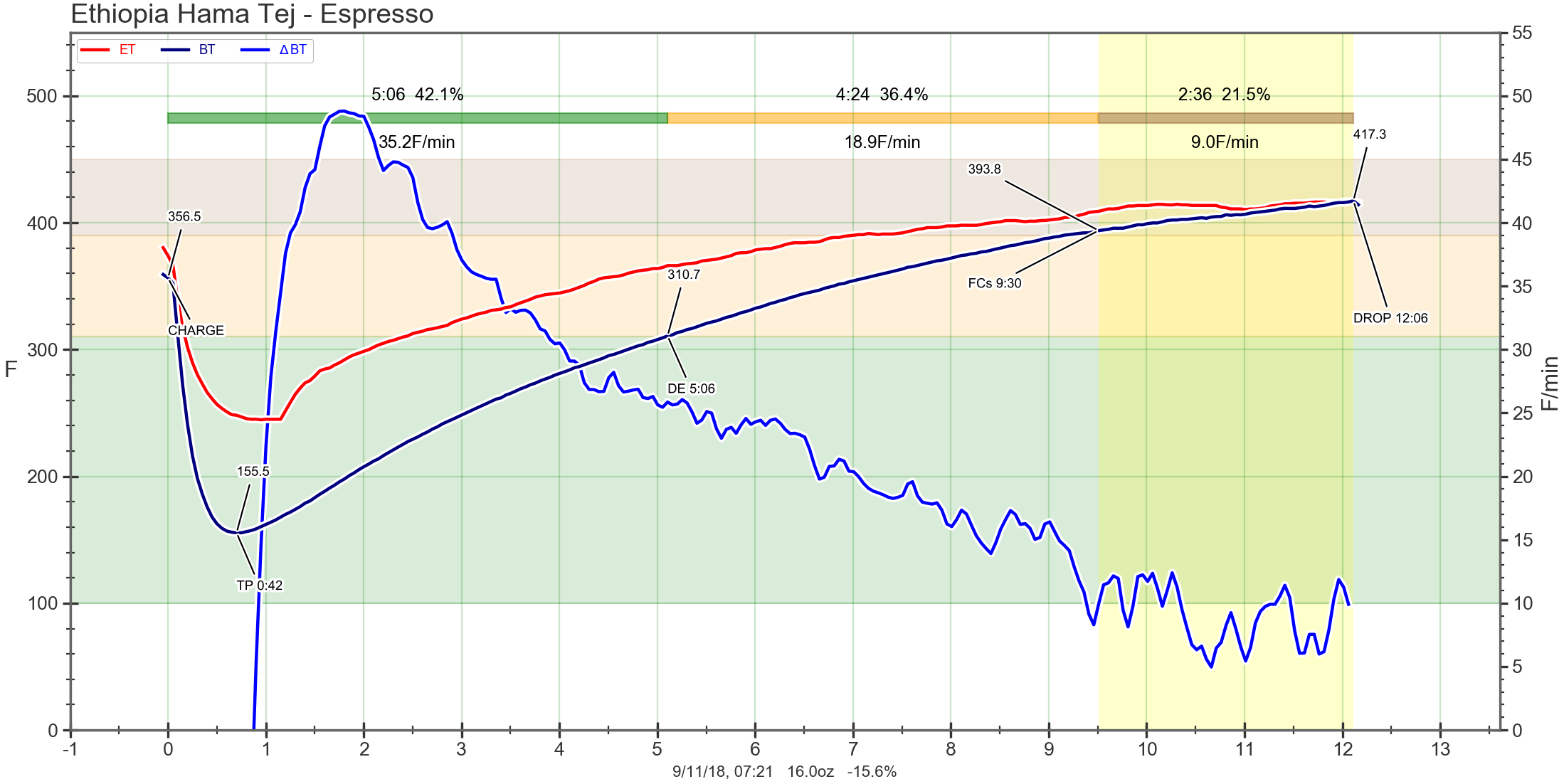
Edit: @psubrewer - that roast looks supremely even & tasty! i found this coffee to be very predictable to roast. almost boringly so. i hope we're all able to take advantage of that & have a little fun experimenting w/o worry of really pooching a roast
Here's my first 2 attempts on this coffee. Really happy with the espresso profile and will likely speed it up a hair next time to see if I can coax more fruit out of it. It's great though and I probably shouldn't mess with it.
The drip profile is toastier than my normal light roasts but I think it's a great crown pleaser. It's got just enough roastiness to let everyone know; "yes, this is coffee". My next batch will be aiming for 8-8.5 minutes overall.
These beans are small & prone to losing lots of moisture during the roast. I'm most excited to hear how @shelly_belly does on the popper. Got a feeling this one is going to work well on that kit. The fast roast times combined with smaller beans that get lighter quickly (from moisture loss) should promote an even roast that is complimented by the speed. Curious to hear from our Behmor users too - this "tej"/honey process coffee should benefit from the gentle radiant heat application.
Drip:

Espresso:

Edit: @psubrewer - that roast looks supremely even & tasty! i found this coffee to be very predictable to roast. almost boringly so. i hope we're all able to take advantage of that & have a little fun experimenting w/o worry of really pooching a roast
I call this my “Happy Wife, Happy Life” roast.
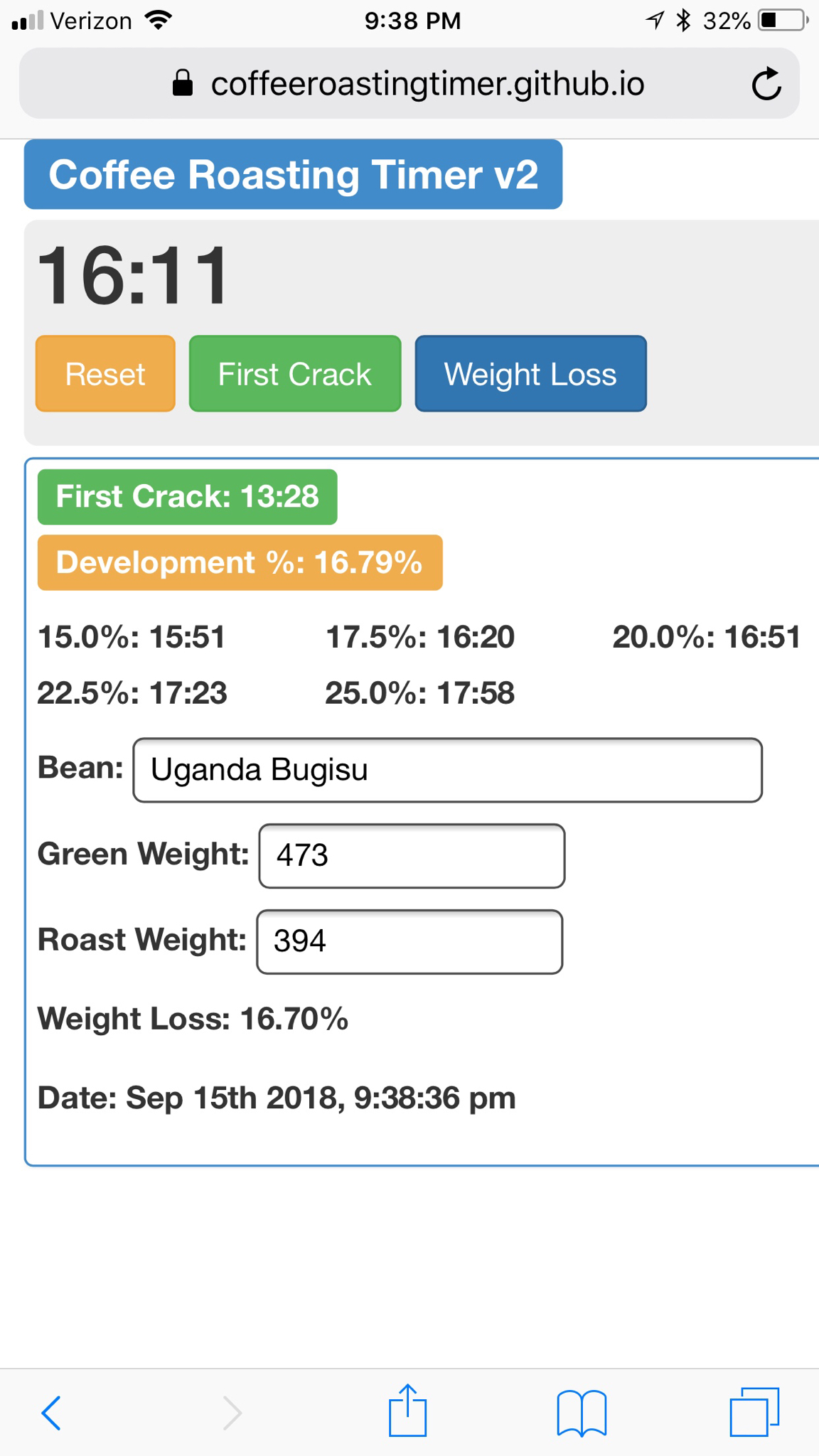
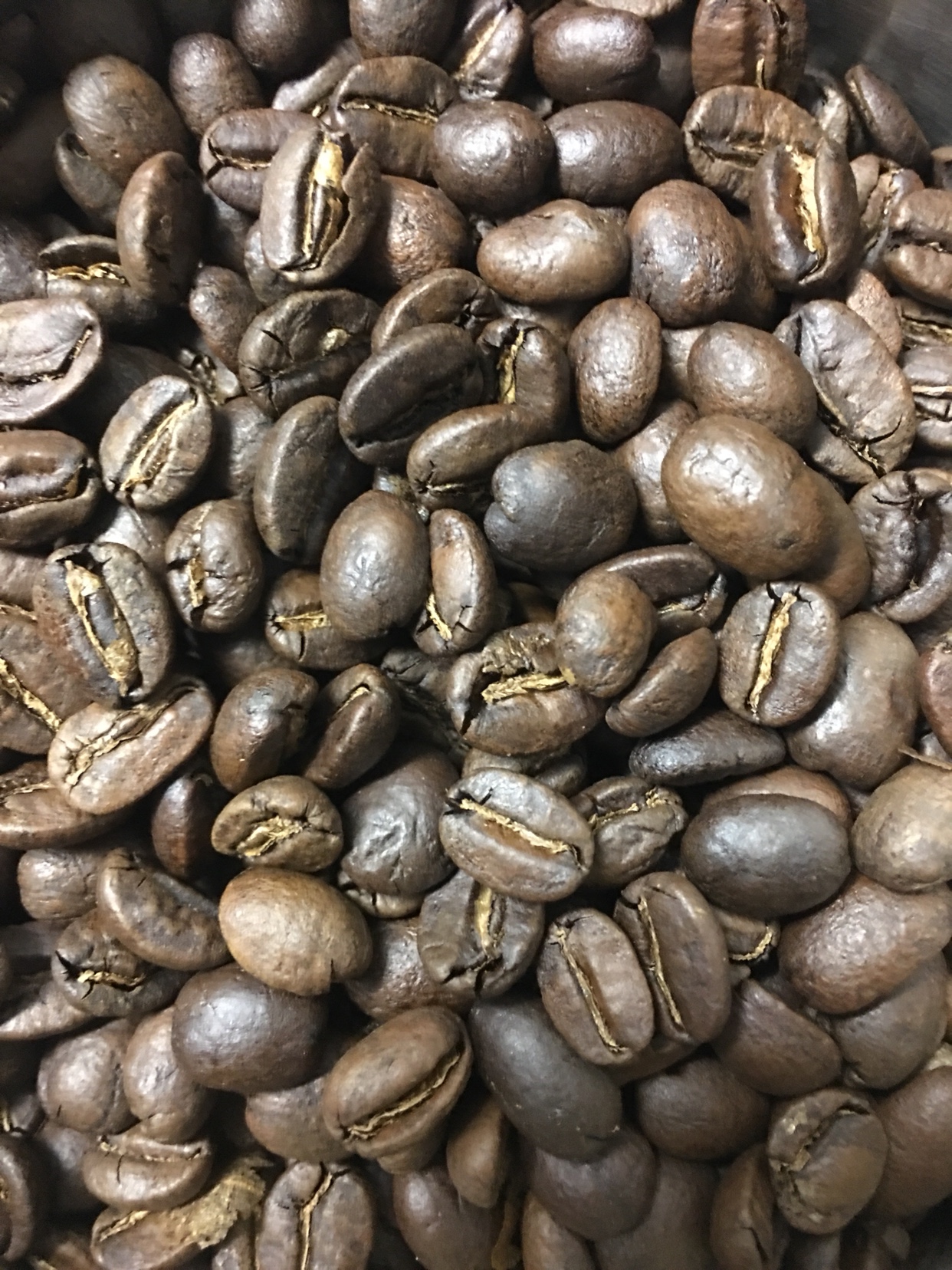


Nice looking roast jimyson!
So I'm drinking the kocherre now here's what I get.
Pour over, 16:1 ratio.
Dark chocolate, citrus, Apple, very slight blueberry lingers. This is a fantastic coffee no doubt.
I feel like this coffee has more body, which I tend to prefer although I don't know if this is a general characteristic of honey processed coffees.
So I'm drinking the kocherre now here's what I get.
Pour over, 16:1 ratio.
Dark chocolate, citrus, Apple, very slight blueberry lingers. This is a fantastic coffee no doubt.
I feel like this coffee has more body, which I tend to prefer although I don't know if this is a general characteristic of honey processed coffees.
Second cup was in the aeropress, 14:1 ratio. Another fantastic cup.
I'm getting bakers chocolate and Carmel with an herbal quality to it as well this time. No berry in this cup.
I should preface all of my notes with the fact that I'm suffering through ragweed season here in the Northeast and allergies have undoubtedly numbed my taste.
I'm getting bakers chocolate and Carmel with an herbal quality to it as well this time. No berry in this cup.
I should preface all of my notes with the fact that I'm suffering through ragweed season here in the Northeast and allergies have undoubtedly numbed my taste.

$10.99 ($31.16 / Ounce)
Hornindal Kveik Yeast for Homebrewing - Mead, Cider, Wine, Beer - 10g Packet - Saccharomyces Cerevisiae - Sold by Shadowhive.com
Shadowhive

$172.35
2 Inch Tri Clamp Keg Manifold With Ball Lock Posts, Pressure Gauge, PRV (0-30 PSI) – Homebrew, Fermentation, Kegging System
wuhanshijiayangzhiyimaoyiyouxiangongsi

$53.24
1pc Hose Barb/MFL 1.5" Tri Clamp to Ball Lock Post Liquid Gas Homebrew Kegging Fermentation Parts Brewer Hardware SUS304(Liquid Hose Barb)
Guangshui Weilu You Trading Co., Ltd

$58.16
HUIZHUGS Brewing Equipment Keg Ball Lock Faucet 30cm Reinforced Silicone Hose Secondary Fermentation Homebrew Kegging Brewing Equipment
xiangshuizhenzhanglingfengshop
![Craft A Brew - Safale S-04 Dry Yeast - Fermentis - English Ale Dry Yeast - For English and American Ales and Hard Apple Ciders - Ingredients for Home Brewing - Beer Making Supplies - [1 Pack]](https://m.media-amazon.com/images/I/41fVGNh6JfL._SL500_.jpg)
$6.95 ($17.38 / Ounce)
$7.47 ($18.68 / Ounce)
Craft A Brew - Safale S-04 Dry Yeast - Fermentis - English Ale Dry Yeast - For English and American Ales and Hard Apple Ciders - Ingredients for Home Brewing - Beer Making Supplies - [1 Pack]
BellaRae

$33.99 ($17.00 / Count)
$41.99 ($21.00 / Count)
2 Pack 1 Gallon Large Fermentation Jars with 3 Airlocks and 2 SCREW Lids(100% Airtight Heavy Duty Lid w Silicone) - Wide Mouth Glass Jars w Scale Mark - Pickle Jars for Sauerkraut, Sourdough Starter
Qianfenie Direct

$7.79 ($7.79 / Count)
Craft A Brew - LalBrew Voss™ - Kveik Ale Yeast - For Craft Lagers - Ingredients for Home Brewing - Beer Making Supplies - (1 Pack)
Craft a Brew

$176.97
1pc Commercial Keg Manifold 2" Tri Clamp,Ball Lock Tapping Head,Pressure Gauge/Adjustable PRV for Kegging,Fermentation Control
hanhanbaihuoxiaoshoudian

$22.00 ($623.23 / Ounce)
AMZLMPKNTW Ball Lock Sample Faucet 30cm Reinforced Silicone Hose Secondary Fermentation Homebrew Kegging joyful
无为中南商贸有限公司

$20.94
$29.99
The Brew Your Own Big Book of Clone Recipes: Featuring 300 Homebrew Recipes from Your Favorite Breweries
Amazon.com

$53.24
1pc Hose Barb/MFL 1.5" Tri Clamp to Ball Lock Post Liquid Gas Homebrew Kegging Fermentation Parts Brewer Hardware SUS304(Liquid MFL)
yunchengshiyanhuqucuichendianzishangwuyouxiangongsi
applescrap
Be the ball!
Ugh, garbage roast. I switched to lower power on a smaller batch and it cracked at 940. Let it go to 1050. Just slightly underdeveloped. Enough to bother me, coffee is stellar with a nice chocolate scent to the roasted bean.
BrewinHooligan
Well-Known Member
HarborTownBrewing
Well-Known Member
First roast of the Ethiopia Kochere. Real interesting bean; hit my numbers later than usual on Ethiopians. Sort of ran out of steam right before 1C but I think it should be okay.
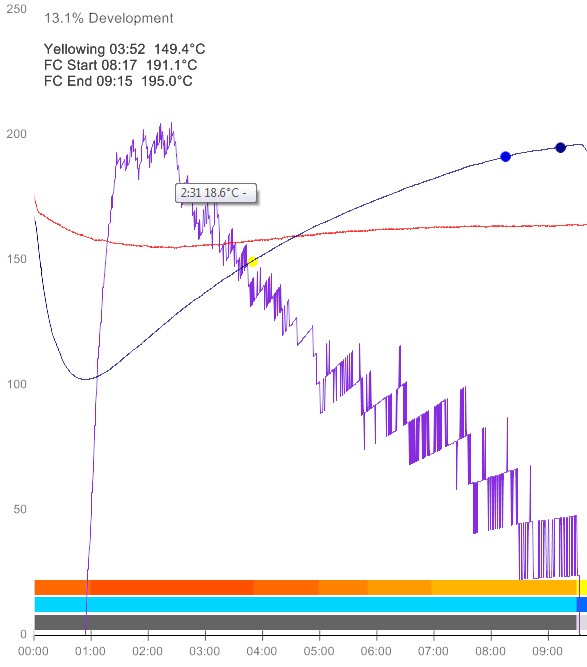

^looks like a great roast. did another batch just now myself. it seems like this coffee needs a good kick in the pants to get it up to speed.
Edit: Said roast. -13.7% which ironically is exactly the same as my 1st batch. Shaved about a minute off the overall time & a couple degrees.
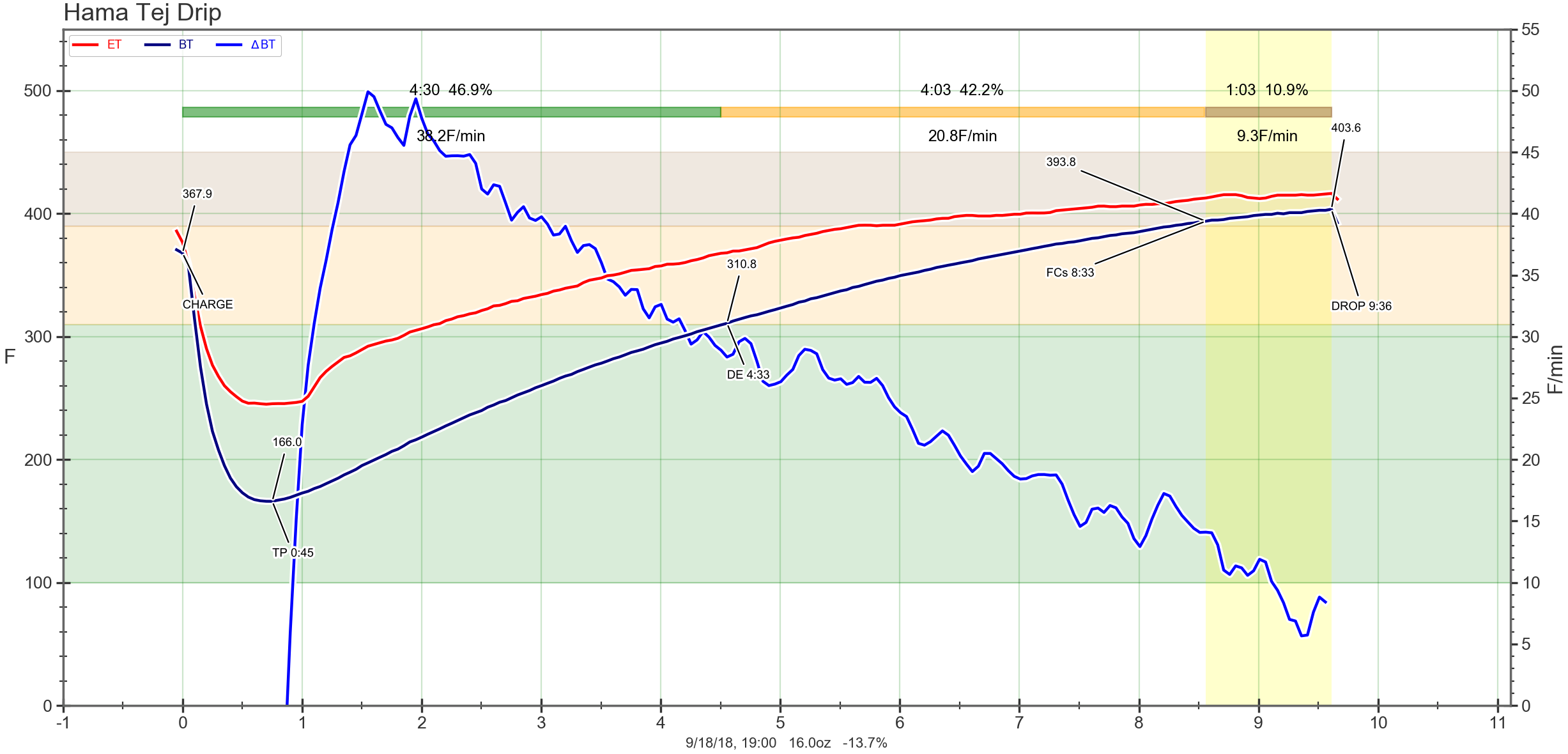
Edit: Said roast. -13.7% which ironically is exactly the same as my 1st batch. Shaved about a minute off the overall time & a couple degrees.

Last edited:
HarborTownBrewing
Well-Known Member
Jammin our profiles look pretty similar actually. One thing I have to figure out is how to get my ROR curve to be more curvy. The Aillio software is plotting it with too many data points so it's not really readable. Not a big deal, just would make it read a little easier.
Every day at work I brew a pour over via V60. Typically I'm left feeling unimpressed - the flavors are muted and just kind of blah. I figured it was due to water quality at my office vs. my home. However, last week I got my water to a boil then let it sit for a while longer than I normally do. Brewed up some coffee and it was FANTASTIC. I have had a suspicion I wasn't letting my water cool enough, but I didn't realize I was so far off. Since my kettle at work doesn't have temp control, I'm going to have to start checking it with a temp sensor or something.
Just sharing for awareness. Water temp is SOOOO important. I've preached it before but I feel hypocritical; I'm tucking my tail between my legs for this PSA though.
Every day at work I brew a pour over via V60. Typically I'm left feeling unimpressed - the flavors are muted and just kind of blah. I figured it was due to water quality at my office vs. my home. However, last week I got my water to a boil then let it sit for a while longer than I normally do. Brewed up some coffee and it was FANTASTIC. I have had a suspicion I wasn't letting my water cool enough, but I didn't realize I was so far off. Since my kettle at work doesn't have temp control, I'm going to have to start checking it with a temp sensor or something.
Just sharing for awareness. Water temp is SOOOO important. I've preached it before but I feel hypocritical; I'm tucking my tail between my legs for this PSA though.
Suggested target temp?
HarborTownBrewing
Well-Known Member
Suggested target temp?
When I am using my Bonavita, I generally use:
201 F for African coffees
203 F for Central/South American coffees
Generally. I have played around with this a bit and you'd be surprised how much of a difference two degrees can have on some of these coffees.
Thanks. I was actually just looking for info around this online yesterday. I have a batch of a Yirgacheffe that got away from me and is a bit too dark. Starbucks fans would think it's the best roast I've done, but to me it's the worst I've roasted in some time. So, if anyone has any guidance specifically on brewing an accidental vienna roast, I'm all ears.When I am using my Bonavita, I generally use:
201 F for African coffees
203 F for Central/South American coffees
Generally. I have played around with this a bit and you'd be surprised how much of a difference two degrees can have on some of these coffees.
BrewinHooligan
Well-Known Member
Roasted the yirg from @jammin last night. Between the colder temps last night and fighting my heat gun to keep from tipping beans my total roast time was way longer than I wanted at a mind blowing 18mins. Time to cut down to half lb batches. The cup this am through the pourover is really really nice though. I will have to try to the aeropress as well and see where this performs best.
HarborTownBrewing
Well-Known Member
I had posted a week ago about some Colombian I was resting on Pinot Noir. I ended up doing 1lb Colombian and 2 tablespoons Pinot Noir. I had started with one tbsp, but after 12 hours noticed the beans had entirely soaked it up so I added a second tbsp.
Roasted it up, it roasted similar to the bourbon aged beans. They always take a little longer, probably due to the added moisture.
Just brewed it in the Melita. Verrry interesting. The aroma of the beans pre-ground was unlike anything I've smelled before; very floral. The bloom also smelled very floral. The coffee itself is interesting - also very floral with a bit more of a jammy flavor; nice and sweet as well.
The more it cooled the more I was digging it, but it would have been nice to see more of the Pinot flavors come through. I don't want to add more liquid to age it, because the beans just get so sticky and I fear some tipping in the roaster. I don't think a longer duration would work, either. I'll have to think about it though.
Either way, so far I like it. This is only about 40 hours post roast so it might change more over the next week.
Roasted it up, it roasted similar to the bourbon aged beans. They always take a little longer, probably due to the added moisture.
Just brewed it in the Melita. Verrry interesting. The aroma of the beans pre-ground was unlike anything I've smelled before; very floral. The bloom also smelled very floral. The coffee itself is interesting - also very floral with a bit more of a jammy flavor; nice and sweet as well.
The more it cooled the more I was digging it, but it would have been nice to see more of the Pinot flavors come through. I don't want to add more liquid to age it, because the beans just get so sticky and I fear some tipping in the roaster. I don't think a longer duration would work, either. I'll have to think about it though.
Either way, so far I like it. This is only about 40 hours post roast so it might change more over the next week.
I was able to get a few roasts in tonight. @Inkleg sent me a lb of Banko so I figured I would throw half of it in the roaster to see what I got. I’m thinking it may have gotten a little too hot prior to FC, but we shall see in the coming days.

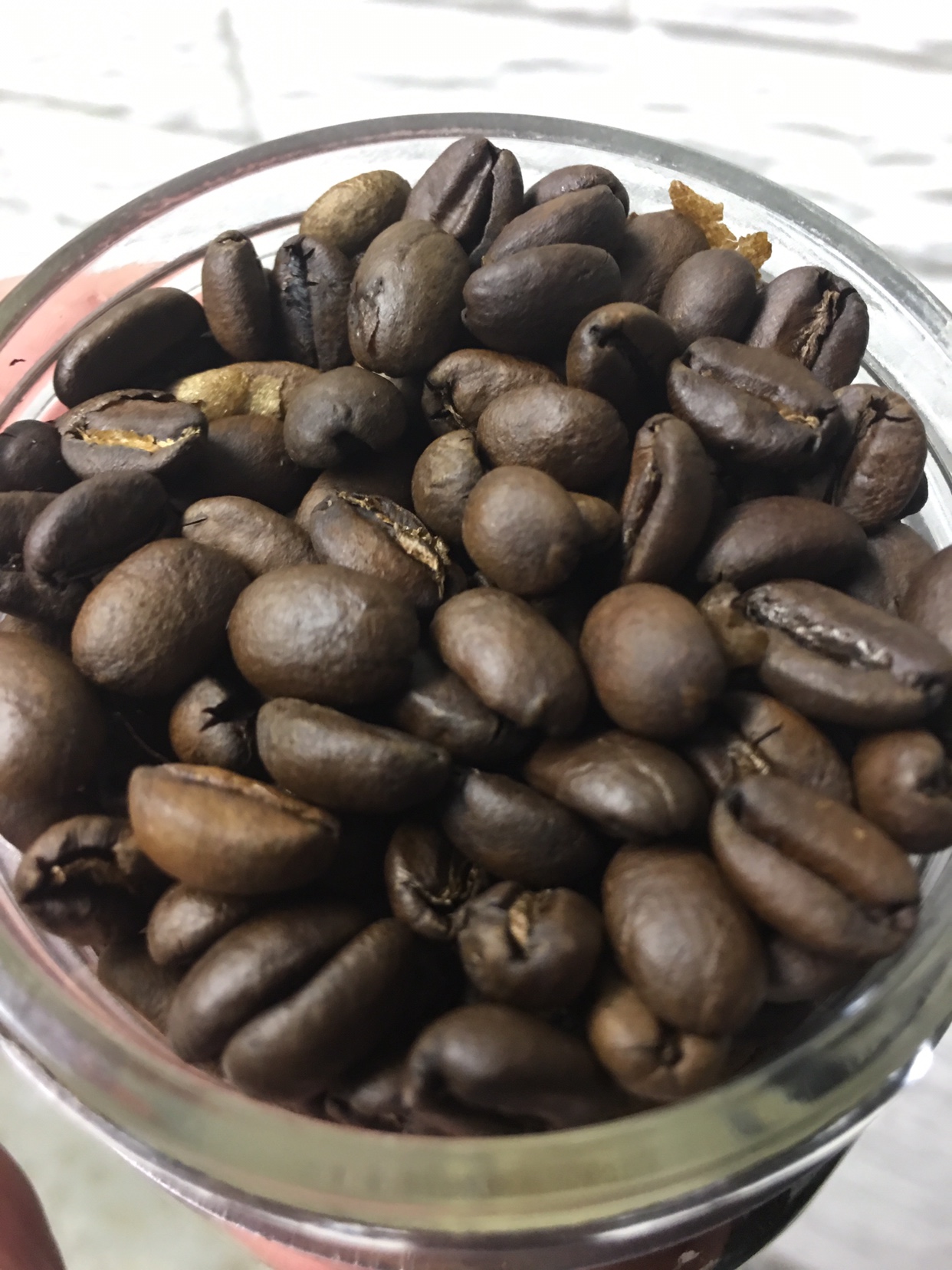
Then I needed to refill the daily coffee jar. Pretty standard roast for this bean.
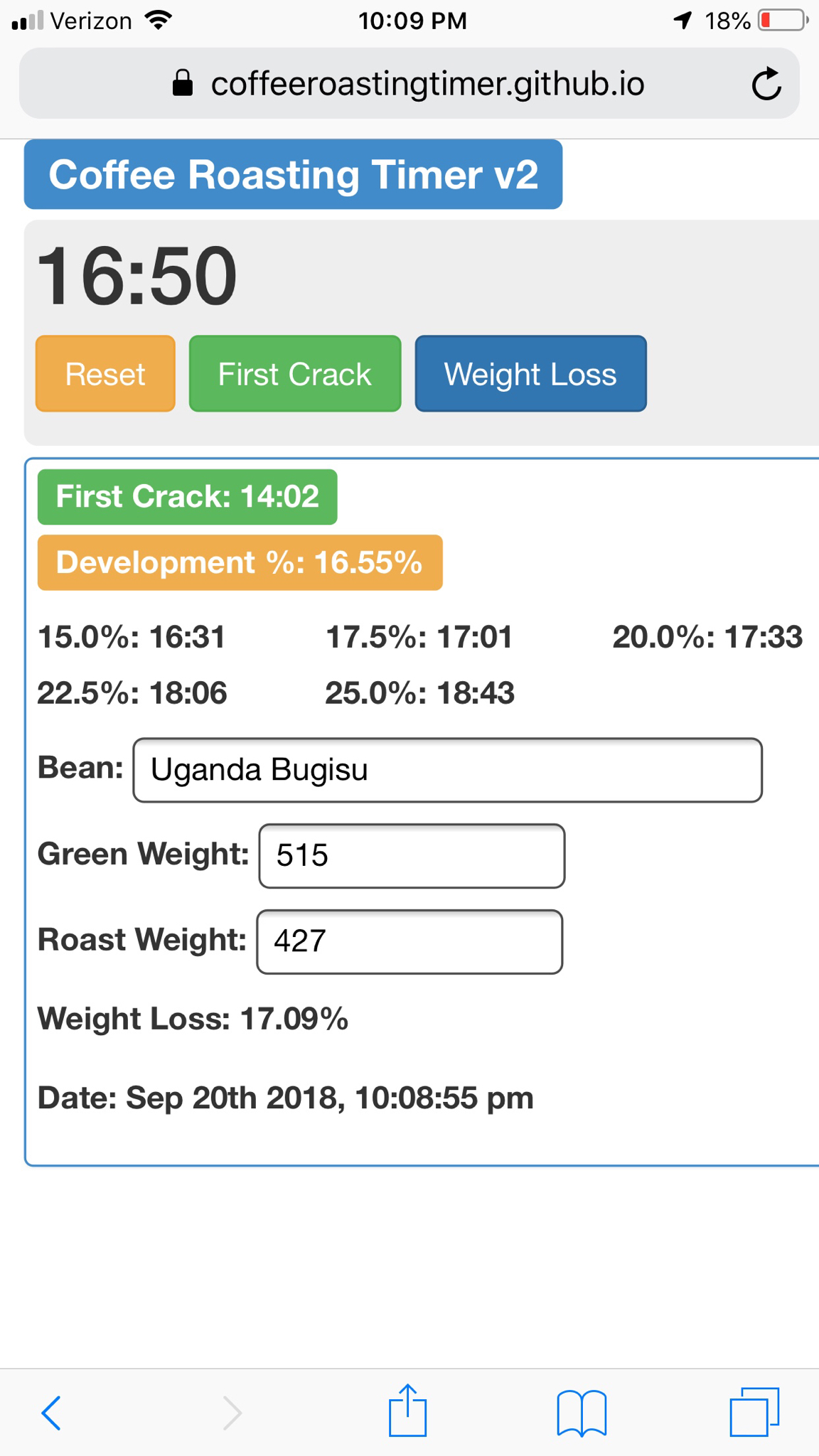
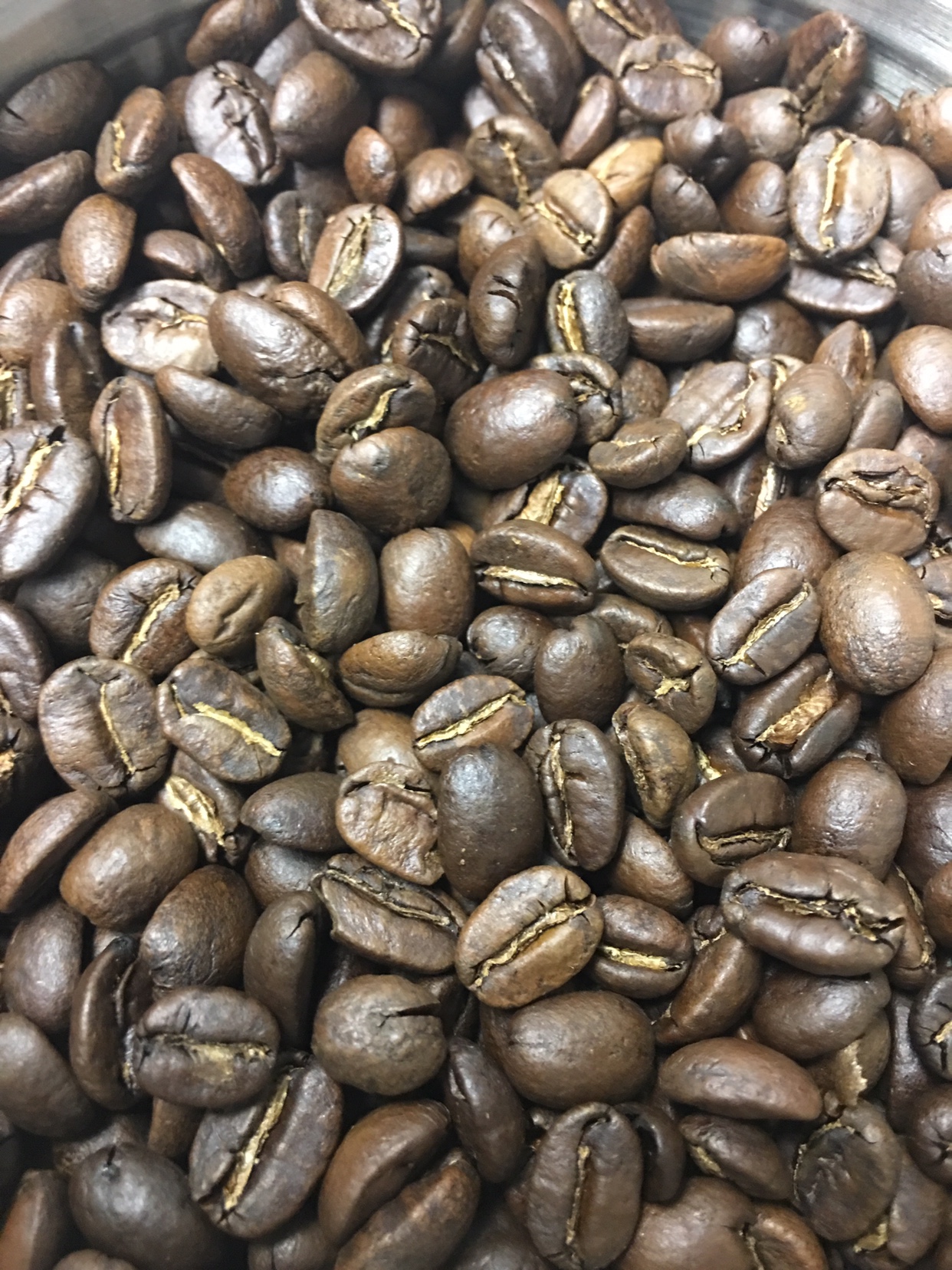


Then I needed to refill the daily coffee jar. Pretty standard roast for this bean.


Last edited:
applescrap
Be the ball!
Sounds awesome @HarborTownBrewing. I like how you are experimenting. Cant wait to see whats next.
Banko! Sweet gift inkleg. I love cats, did I mention that?
@BrewinHooligan i agree Ethiopian coffee like this, the nitsu ruz as well, seems prone to tipping with heat gun. I cant decide if i like sacrificing a little tipping for a brighter, fruitier roast or not. Please let me know how these roasts finish out for you. The roast i went to 5 of 6 power on and pulled at 10 percent development, expresses to much green imo and is pissing me off and not letting this great coffee shine. Maybe half pound is the answer. Also perhaps more. The larger mass helps offset the powerful heat. Too large a roast hasnt worked for me either. I think you mentioned 20 oz, that seems about right. I havent put power on four and let one rip. Or even 5 straight through. Need to get some less expensive beans and practice more.
Banko! Sweet gift inkleg. I love cats, did I mention that?
@BrewinHooligan i agree Ethiopian coffee like this, the nitsu ruz as well, seems prone to tipping with heat gun. I cant decide if i like sacrificing a little tipping for a brighter, fruitier roast or not. Please let me know how these roasts finish out for you. The roast i went to 5 of 6 power on and pulled at 10 percent development, expresses to much green imo and is pissing me off and not letting this great coffee shine. Maybe half pound is the answer. Also perhaps more. The larger mass helps offset the powerful heat. Too large a roast hasnt worked for me either. I think you mentioned 20 oz, that seems about right. I havent put power on four and let one rip. Or even 5 straight through. Need to get some less expensive beans and practice more.
Jammin our profiles look pretty similar actually. One thing I have to figure out is how to get my ROR curve to be more curvy. The Aillio software is plotting it with too many data points so it's not really readable. .
In Artisan, you can adjust sample rate & smoothing. I have my sample rate set pretty tight with little to no smoothing. This yields a "spikier" curve but it doesn't sugar coat anything. I roasted for a long with an artificially buffered feedback curve and after i pulled the curtain back, I was able to learn a lot.
I agree though, the Aillio software comes across as a bit noisy. I wonder if there is a smoothing feature you can adjust in the settings?
So how was that roast? After a couple days rest I am really enjoying mine. Speeding it up really improved the cup. It cut back the bitterness substantially & really brought out sugar cane & orange. Really like this stuff.
Anyone else drinking that Ethiopian Hama Tej yet?
- Joined
- Mar 18, 2012
- Messages
- 2,418
- Reaction score
- 3,060



Got a wonderful surprise beer/coffee package in the mail yesterday. Thanks @jimyson !!
The aroma of the green beans was awesomely amazing. The only information on the bag was a question mark and smiley face ?
I fat fingered the phone while the timer was going so there's about a minute and a half to two minutes it's not showing on this profile. I'll enjoy a cup in the morning.
HarborTownBrewing
Well-Known Member
@jammin I tried the Hama again today from that roast I posted. I'm getting a lot of fig, a little jam flavor. It's not my typical Ethiopian, and I'm not sure if that's because it's unique or because I've gotten into a habit of ordering similar beans over and over.
I like it, but I feel like I'm missing something. Next roast I do of this I'm going to go a lot faster and try to get to 1c in about 7:30 compared to the 8:20ish I had on this roast.
I like it, but I feel like I'm missing something. Next roast I do of this I'm going to go a lot faster and try to get to 1c in about 7:30 compared to the 8:20ish I had on this roast.
Good question for the group. If you were given a bean that had no details given about region or profile, what Would you do to determine the first roasting profile to use?
HarborTownBrewing
Well-Known Member
Good question. My first (and only so far) response would be to smell it actually. Sometimes I can get a good idea of its origin based on the aroma of the green bean.Good question for the group. If you were given a bean that had no details given about region or profile, what Would you do to determine the first roasting profile to use?
HoppyDaze
Well-Known Member
View attachment 589347
View attachment 589348 View attachment 589349
Got a wonderful surprise beer/coffee package in the mail yesterday. Thanks @jimyson !!
The aroma of the green beans was awesomely amazing. The only information on the bag was a question mark and smiley face ?. Half Pint immediately stuck her nose in the bag for a deep whiff and off to the roaster we went.
I fat fingered the phone while the timer was going so there's about a minute and a half to two minutes it's not showing on this profile. I'll enjoy a cup in the morning.
That possum is trying to steal your coffee.
That possum is trying to steal your coffee.
[emoji23]
Good question. My first (and only so far) response would be to smell it actually. Sometimes I can get a good idea of its origin based on the aroma of the green bean.
What about hardness? Does aroma provide clues into that? Size, color?
HarborTownBrewing
Well-Known Member
What about hardness? Does aroma provide clues into that? Size, color?
Well, size is a beast in itself - Kenya produces both peaberry and AA sized, so that could be a wildcard. Color it's hard to say unless it's an island bean like Sumatra or something. Hardness - I don't really have a way of measuring that.
I'd rather stick to roasting something 100% traceable. I'm not even interested in a bean if they don't list the region, because that typically tells me it's not been the most cared for bean.
Well, size is a beast in itself - Kenya produces both peaberry and AA sized, so that could be a wildcard. Color it's hard to say unless it's an island bean like Sumatra or something. Hardness - I don't really have a way of measuring that.
I'd rather stick to roasting something 100% traceable. I'm not even interested in a bean if they don't list the region, because that typically tells me it's not been the most cared for bean.
This was for fun and maybe an little exercise in learning how to create and change a roast profile based on limited information. For the bean that I sent @Inkleg, I know what it is.
- Joined
- Mar 18, 2012
- Messages
- 2,418
- Reaction score
- 3,060
Sorry for the late reply, busy weekend.Good question for the group. If you were given a bean that had no details given about region or profile, what Would you do to determine the first roasting profile to use?
As I'm not too bean savvy this is how it went.
Opened bag and smelled beans WONDERFUL, whiskey?? Had wife smell beans, she liked. Half Pint has come from across the room because she smells green coffee beans. Let her have a smell and off to the roasting room we go. After putting the beer that came with the coffee in the fridge.
Process is as follows for this bean. Get total weight of beans and split in half. I notice that the beans are small, but uniform in size. From here it's a roast I use on the Behmor for a good many African beans (from info found on this thread). Pre heat the Behmor, put in 265g hit 1 pound, start, P5 (100% power) and D to speed up the drum. At around 3 minutes I held the temp around 240* for 2 minutes then back to full power up to and held around 311* until first crack. Hit the first crack button on the timer (it really really helps not to close the timer by accident 2 minutes into the roast) and drop power down to 25-50% while it develops. Pull the beans and cool in the homemade vacuum assisted colander contraption I've made.
Love on cat and get ready to roast some El Salvador beans for work.
Sorry for the late reply, busy weekend.
As I'm not too bean savvy this is how it went.
Opened bag and smelled beans WONDERFUL, whiskey?? Had wife smell beans, she liked. Half Pint has come from across the room because she smells green coffee beans. Let her have a smell and off to the roasting room we go. After putting the beer that came with the coffee in the fridge.
Process is as follows for this bean. Get total weight of beans and split in half. I notice that the beans are small, but uniform in size. From here it's a roast I use on the Behmor for a good many African beans (from info found on this thread). Pre heat the Behmor, put in 265g hit 1 pound, start, P5 (100% power) and D to speed up the drum. At around 3 minutes I held the temp around 240* for 2 minutes then back to full power up to and held around 311* until first crack. Hit the first crack button on the timer (it really really helps not to close the timer by accident 2 minutes into the roast) and drop power down to 25-50% while it develops. Pull the beans and cool in the homemade vacuum assisted colander contraption I've made.
Love on cat and get ready to roast some El Salvador beans for work.
And the result?
Similar threads
- Replies
- 18
- Views
- 1K
- Replies
- 6
- Views
- 1K















































